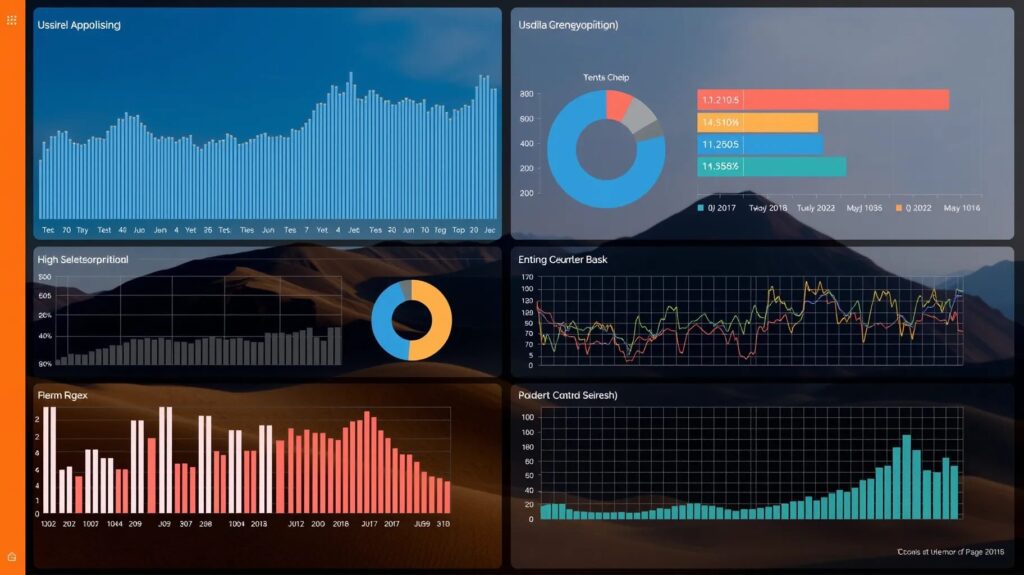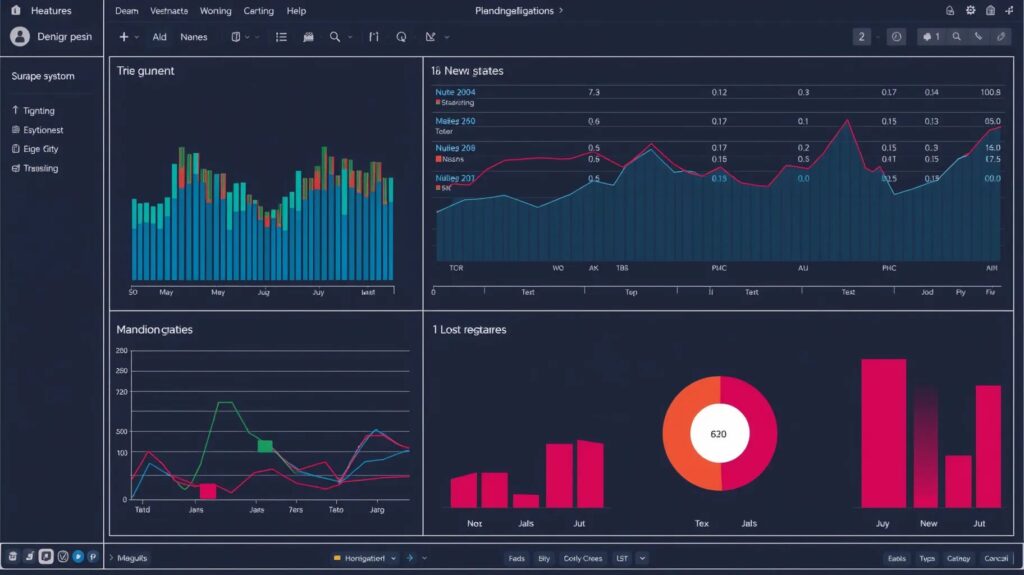
If you’re looking to elevate your AI workflows and push ComfyUI to new limits, emerging plugins are the way to go. These plugins are transforming user interaction, automation, and data visualization, opening up a world of advanced possibilities.
Why ComfyUI Stands Out Among AI Frameworks
Intuitive Interface Meets Robust Functionality
ComfyUI’s intuitive interface strikes a balance between functionality and user experience. Many users find it accessible, even if they don’t have a technical background. Everything from data input to visualization is straightforward, making ComfyUI an ideal choice for beginners and seasoned pros alike. By enhancing workflow efficiency, it simplifies complex processes without the steep learning curve.
Customization Made Simple
Beyond being user-friendly, ComfyUI also offers deep customization. With the core interface, you can tailor everything to your liking, whether you’re setting up specific controls or creating a unique color scheme. Plugins extend this customization, allowing users to personalize nearly every component of the software—from the layout to specialized toolbars—giving each user a distinctive, productivity-enhancing setup.
Regular Updates Keep It Relevant
One of the most compelling reasons to use ComfyUI is its commitment to improvement. Frequent updates integrate user feedback, introducing new features and fixing bugs promptly. The result? A constantly evolving platform that stays ahead of industry trends, ensuring you have access to the latest in user interface advancements and automation capabilities.

Top Plugins Enhancing ComfyUI
Automation Plugins: Streamline Repetitive Tasks
One of the most time-saving plugins for ComfyUI is automation. These plugins make repetitive tasks a thing of the past, handling actions like form submissions, data processing, or system notifications automatically. Automation plugins can be tailored to specific workflows, meaning they’re adaptable for both individual and team use. By freeing up time from mundane tasks, they allow users to focus on the creative and strategic aspects of their work.
Visualization Plugins: Data at a Glance
Visualization plugins are game-changers, especially if you work with large datasets. They help you transform data into clear, visual formats—from interactive graphs to insightful dashboards. By using these plugins, you can get a quick overview of trends and patterns in real-time, which improves decision-making and enables more effective data storytelling.
Collaboration Plugins: Working Together Made Easy
The latest collaboration plugins integrate tools like task management, comment sections, and real-time syncing, so teams can work together seamlessly. With multiple contributors able to interact and make changes simultaneously, collaboration plugins are essential for boosting productivity in shared projects. These tools also support remote work, bridging the gap between distributed teams and enabling smooth, cohesive operations.

Advanced Workflow Plugins: The Power of Automation and AI
Trigger-Based Workflows for Real-Time Action
Trigger-based workflows respond to specific events within ComfyUI. For instance, if new data is uploaded, a trigger-based plugin can automatically start a series of tasks like data categorization, tagging, or initial processing. This cuts down response times and ensures actions are executed precisely when needed.
Enhancing ComfyUI with Personalization Plugins
Custom Dashboards Tailored to Your Needs
Personalization plugins allow users to create custom dashboards that cater to their specific workflows. Imagine having only the most essential tools, visualizations, and shortcuts right at your fingertips! This level of customization lets users prioritize what’s important, making the interface feel more personal and reducing time spent searching for features. The best part? These plugins are flexible enough to grow with your needs.
Theme and Styling Plugins for a Unique Look and Feel
Theme plugins let users create a unique look and feel for their workspace, whether they prefer a minimalist aesthetic or a vibrant layout. Colors, fonts, and even button styles can be adjusted for a more immersive experience. The added advantage is that these visual elements can also enhance focus and usability, especially in environments where prolonged screen time is common.
Accessibility Plugins for an Inclusive Experience
Accessibility plugins make ComfyUI more user-friendly for individuals with diverse needs. These plugins often support screen readers, color-blind-friendly themes, and alternative navigation modes. They ensure the platform can be used by a wider audience and make ComfyUI a more inclusive tool overall. With these, users with specific needs can access and engage with ComfyUI comfortably and effectively.
Data Import and Export Plugins: Bridging Data Gaps
Seamless Integration with External Tools
Data import/export plugins allow users to sync data across various platforms, eliminating the need for manual data entry. This feature is especially useful for businesses that rely on multiple software systems, as it ensures that all data in ComfyUI is current. It’s a quick, seamless way to bridge data from external sources into your ComfyUI environment, improving workflow continuity.
Real-Time Data Import for Faster Insights
Real-time import plugins allow data to flow into ComfyUI as it’s created, giving users immediate access to the latest information. This is a massive advantage for users working in fast-paced fields like finance, digital marketing, and real-time analytics. The benefit? Decisions can be made with the freshest data, which often leads to more effective and accurate outcomes.
Advanced Export Options to Share Insights
For those who need to share insights or reports, export plugins are indispensable. They make it simple to export data visualizations, summaries, and analytics in various formats—whether as a PDF, Excel sheet, or an interactive web link. This capability is perfect for presentations, reports, and data sharing, ensuring that information flows smoothly outside the ComfyUI ecosystem.
Security and Privacy Plugins: Protecting Your Data
End-to-End Encryption for Data Security
With end-to-end encryption plugins, users can feel secure knowing that their data is safeguarded during transmission. These plugins ensure that sensitive information remains encrypted from the moment it leaves one device until it reaches its destination within ComfyUI, keeping third parties from intercepting and accessing it. In fields where data privacy is paramount, these plugins provide peace of mind and compliance with stringent security regulations.
Two-Factor Authentication for Enhanced Access Control
Adding two-factor authentication (2FA) plugins to ComfyUI is a straightforward way to boost security. These plugins require users to verify their identity twice, often through a mobile device or email verification code. Not only does this prevent unauthorized access, but it also lets users know when someone tries to log in without permission. For teams, 2FA is an excellent layer of added security that keeps sensitive information safer.
Role-Based Access for Streamlined Permissions
In multi-user environments, role-based access plugins make managing permissions simple. This functionality allows administrators to assign specific roles to users, limiting access to certain areas or features of ComfyUI based on user responsibilities. It keeps sensitive data restricted to only those who need it and allows teams to focus on their tasks without navigating unnecessary parts of the interface.
AI and Machine Learning Plugins: Powering Smarter Workflows
Predictive Analytics for Informed Decision-Making
AI-powered plugins with predictive analytics capabilities allow users to analyze trends and make forecasts based on historical data. Imagine a sales team using ComfyUI with a plugin that predicts revenue trends based on past performance—these insights help teams make proactive, data-driven decisions. Predictive analytics plugins offer valuable foresight and help businesses stay agile.
Natural Language Processing (NLP) for Improved Interaction
NLP plugins integrate language understanding into ComfyUI, letting users interact with the platform using conversational language. Users can query data or request actions in plain English (or other supported languages), reducing reliance on technical commands and making the interface more accessible to a broader audience. This ease of use is perfect for quickly retrieving insights or initiating workflows with minimal hassle.
Workflow Optimization through AI Suggestions
Some plugins use AI to recommend workflow improvements, offering real-time suggestions based on user behavior and past activity patterns. For instance, if ComfyUI notices that you frequently perform specific actions in a particular order, it may suggest ways to automate that process. This optimization plugin makes your workflow more efficient over time, cutting down repetitive tasks and maximizing productivity.
Using the right combination of these emerging plugins, users can unlock ComfyUI’s full potential. Whether it’s enhanced security, AI-driven insights, or personalized dashboards, the plugins available today make ComfyUI an incredibly versatile platform tailored to modern needs.
FAQs
How do I install plugins in ComfyUI?
Installing plugins in ComfyUI is straightforward. Head to the Plugin Manager within the app’s settings, where you’ll find options to browse, install, and manage plugins. Many plugins can be added with a single click, while some may require additional setup. Always follow the plugin-specific instructions for a smooth installation process.
Are ComfyUI plugins safe to use?
Yes, as long as you’re using plugins from trusted sources or the official ComfyUI plugin repository. These plugins are vetted for security and functionality, but it’s still wise to double-check permissions and settings, especially if the plugin handles sensitive data. For maximum security, consider enabling additional protection through encryption or two-factor authentication plugins.
Can I create my own plugins for ComfyUI?
Absolutely! ComfyUI supports custom plugin development. Developers can use the provided API documentation to build plugins that meet specific requirements. Once developed, custom plugins can be integrated into your ComfyUI environment and even shared with the community if desired.
What if a plugin causes issues in ComfyUI?
If a plugin is causing issues, you can easily disable or uninstall it via the Plugin Manager. Restarting ComfyUI after disabling or removing the plugin typically resolves any problems. Also, checking for plugin updates can help, as developers often release patches to fix bugs or compatibility issues.
Can I use multiple plugins at once?
Yes, ComfyUI is designed to support multiple plugins running simultaneously. You can install various plugins for different tasks, like automation, visualization, and security, and they will work in tandem to enhance your experience. However, for optimal performance, it’s good practice to only keep essential plugins active.
Do plugins affect the performance of ComfyUI?
Some plugins may impact performance, particularly if they are resource-intensive or if you have several running at once. To maintain a smooth experience, regularly review active plugins and disable those you don’t use frequently. Lightweight plugins generally have minimal effect on performance.
Are ComfyUI plugins free to use?
Many plugins for ComfyUI are free or open-source, but some premium plugins may require payment. Premium plugins often come with advanced features or dedicated support, which can be beneficial for users with specific needs or larger teams looking for professional functionality.
Is technical knowledge needed to use ComfyUI plugins?
Not necessarily. Most ComfyUI plugins are designed to be user-friendly and require minimal technical skills. The Plugin Manager handles installation, and most plugins come with easy-to-follow instructions. For advanced plugins, some technical understanding can help, but it’s not a strict requirement for everyday usage.
Can I customize plugin settings in ComfyUI?
Yes, most plugins come with customizable settings to fit specific user preferences or workflow requirements. Once installed, you can access each plugin’s settings within the Plugin Manager or through its dedicated menu. Adjusting settings allows you to tailor the plugin’s behavior, interface, and functionality to suit your needs.
Do I need to update my plugins regularly?
Regular updates are recommended to keep plugins running smoothly and securely. Updates often contain bug fixes, performance improvements, and compatibility enhancements with the latest ComfyUI versions. You’ll usually receive a notification within ComfyUI when updates are available, or you can manually check for updates through the Plugin Manager.
Are there plugins specifically for team collaboration?
Yes, ComfyUI offers collaboration plugins that facilitate teamwork. These plugins often include features like shared dashboards, real-time updates, comment sections, and task management tools. They allow team members to work together seamlessly within the ComfyUI interface, even when working remotely, which can greatly enhance productivity and project coordination.
Can I remove plugins from ComfyUI if I no longer need them?
Absolutely. You can uninstall plugins anytime through the Plugin Manager. Simply locate the plugin, choose the uninstall option, and follow any prompts to complete the removal. Removing unused plugins not only streamlines the interface but can also improve system performance.
How can I find the best plugins for my workflow?
The best way to find plugins suited to your needs is to explore the official ComfyUI plugin repository, where plugins are categorized by function (automation, visualization, security, etc.). User reviews and ratings are also helpful in identifying popular plugins. Additionally, many users share plugin recommendations and use cases on forums or community spaces related to ComfyUI.
Do plugins require an internet connection to work?
It depends on the plugin. Some plugins, especially those that rely on real-time data import/export or cloud-based features, require an internet connection. However, many plugins designed for internal data processing, automation, or customization work offline. Always check the plugin description to see if an internet connection is needed for full functionality.
Can plugins help with data analysis in ComfyUI?
Yes, there are several data analysis plugins that enhance ComfyUI’s ability to process and visualize data. These plugins offer capabilities such as advanced data visualization, trend tracking, and predictive analytics. They allow users to gain insights from complex datasets directly within ComfyUI, making it a powerful tool for decision-making based on data trends.
Is support available if I run into issues with a plugin?
For most plugins, you can find support resources through the official ComfyUI community, forums, or documentation provided by the plugin’s developer. If a plugin is particularly popular or comes from a reputable developer, there may also be dedicated support channels or FAQs. For critical issues, you might consider reaching out directly to the developer, as many offer updates or troubleshooting tips.
Will using plugins slow down my ComfyUI interface?
Some plugins, particularly those performing intensive data processing or real-time tasks, can slightly affect performance, especially if several are running at once. To maintain optimal speed, try to limit active plugins to those essential for your workflow. If you notice a significant slowdown, consider disabling non-essential plugins to improve the interface’s responsiveness.
Resources
- ComfyUI Official Documentation
The official guide for everything related to ComfyUI, including installation, plugin integration, and troubleshooting. - GitHub – ComfyUI Plugin Repository
Explore the open-source plugins available for ComfyUI and contribute to ongoing projects.
Website: github.com/comfyui/plugins - Stack Overflow – ComfyUI Tag
A great resource for community-driven Q&A, where developers troubleshoot and share knowledge about using and enhancing ComfyUI with plugins.
Website: stackoverflow.com/tags/comfyui - ComfyUI Plugin Marketplace
Discover and download the latest add-ons to extend the capabilities of your ComfyUI setup.
Website: marketplace.comfyui.com - Reddit – ComfyUI Community
Join the conversation on Reddit to share tips, tricks, and insights about new plugins and upcoming updates.
Website: reddit.com/r/comfyui - Plugin Compatibility Checker Tool
Ensure your plugins are compatible and avoid conflicts by using this tool.
Website: comfyui.com/plugin-checker - Medium – Articles on ComfyUI Plugins
In-depth articles that explore new plugins and best practices for using ComfyUI efficiently.
Website: medium.com/tag/comfyui - YouTube – ComfyUI Tutorials
Step-by-step video guides to help beginners and advanced users master ComfyUI and its plugin ecosystem.
Website: youtube.com/comfyuitutorials